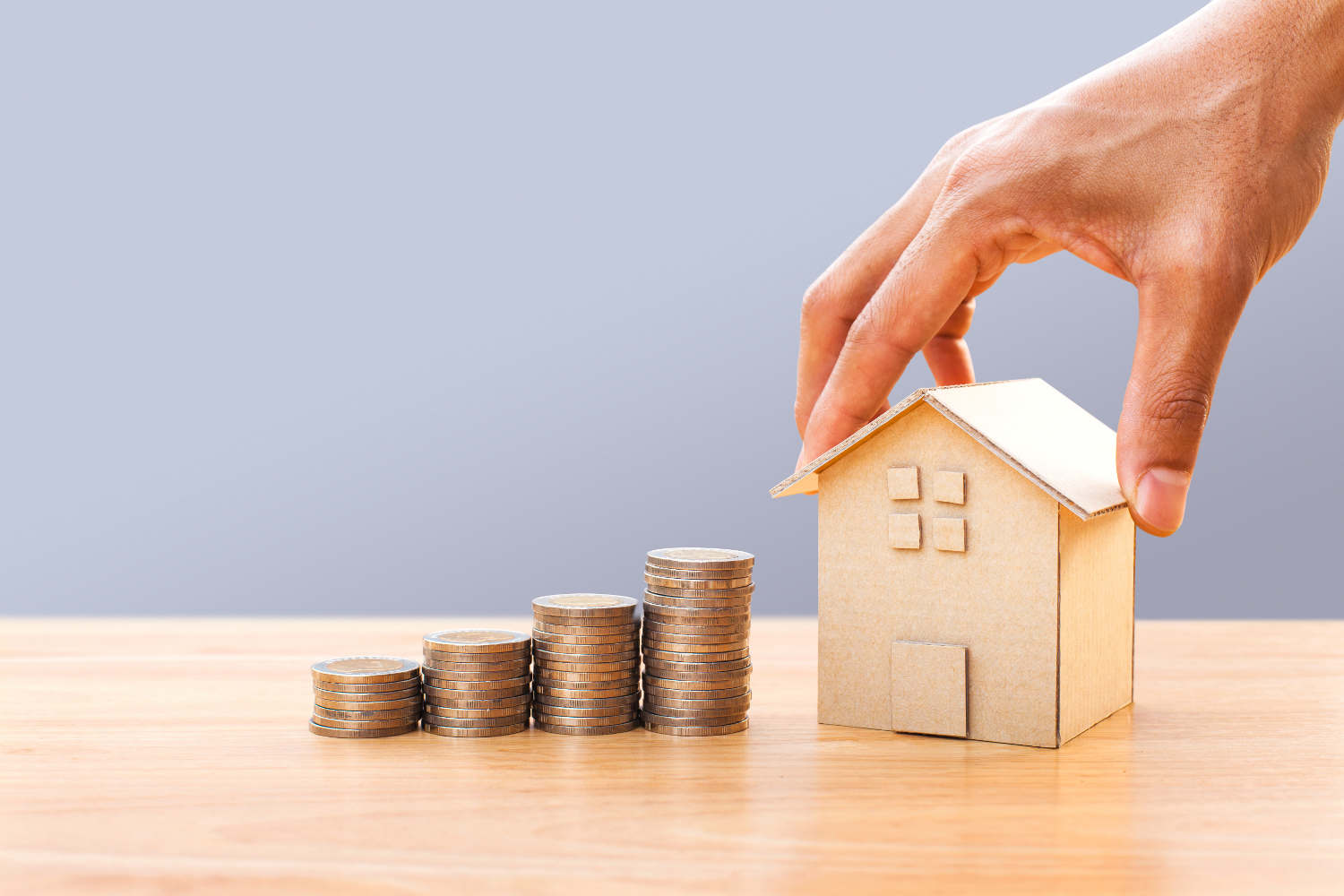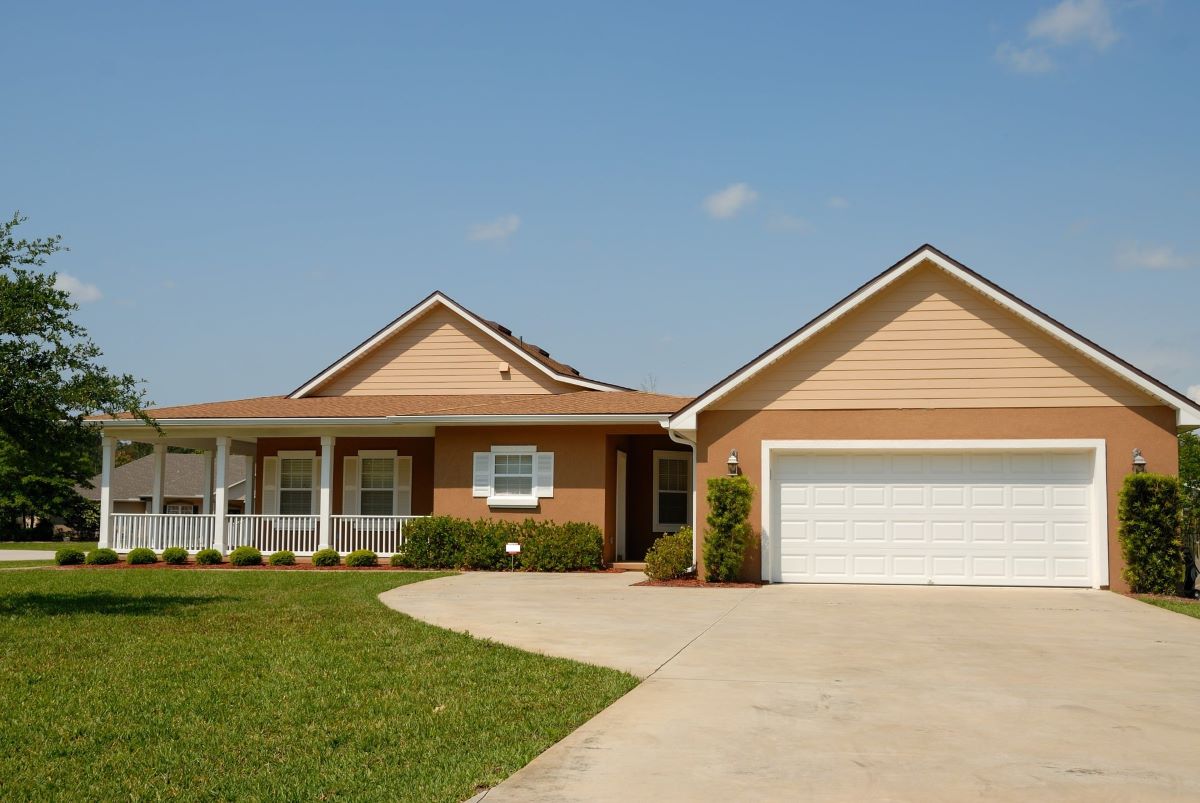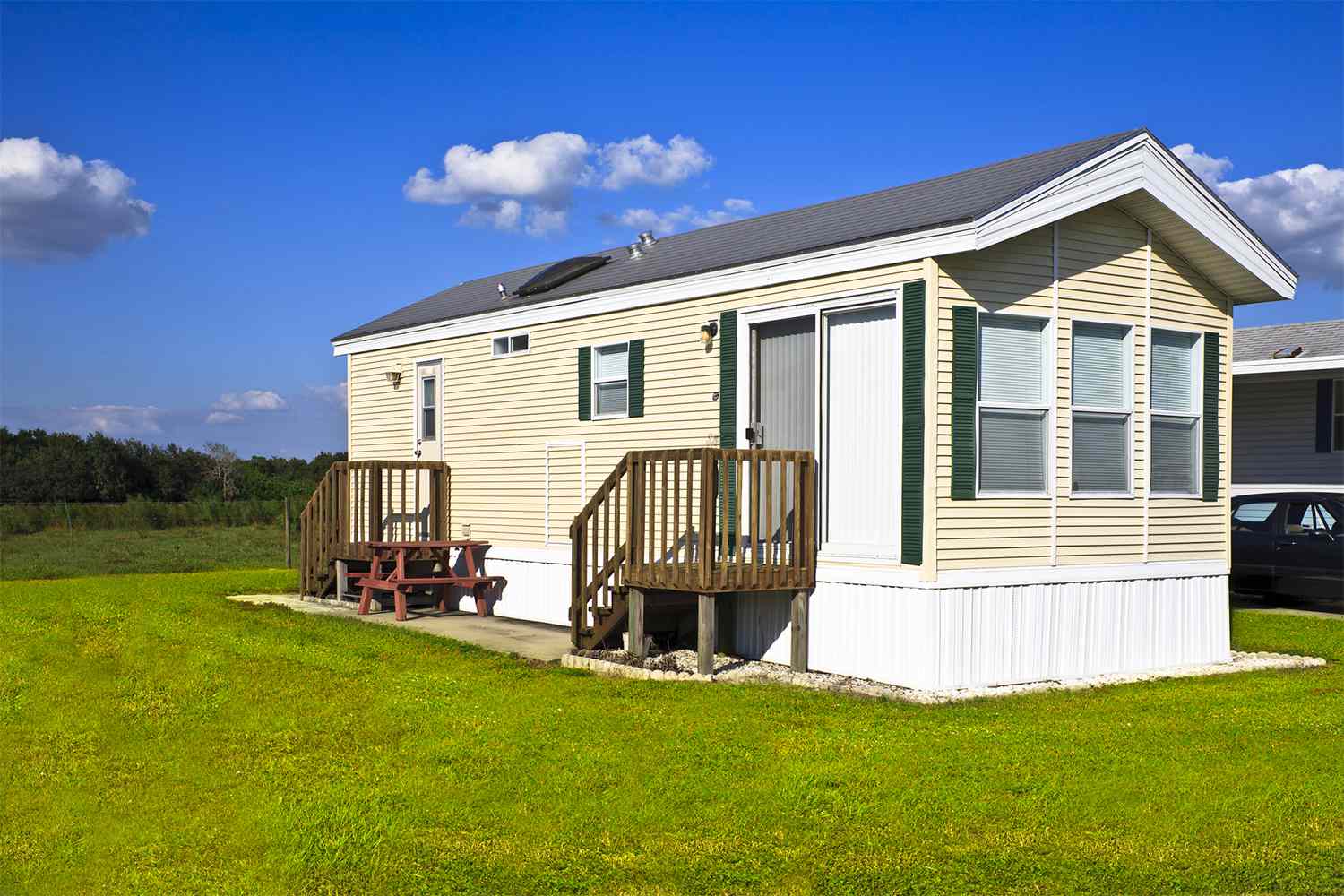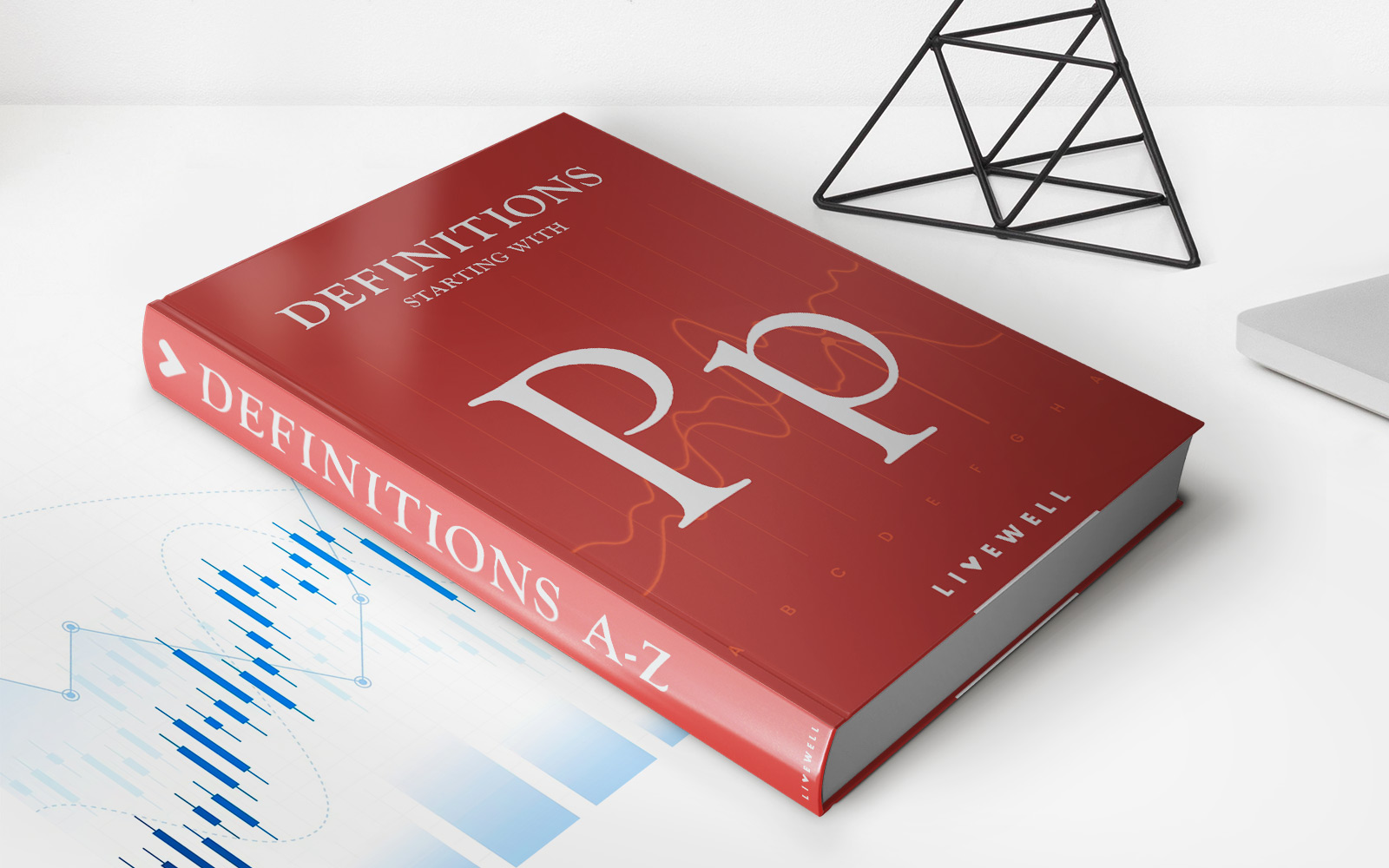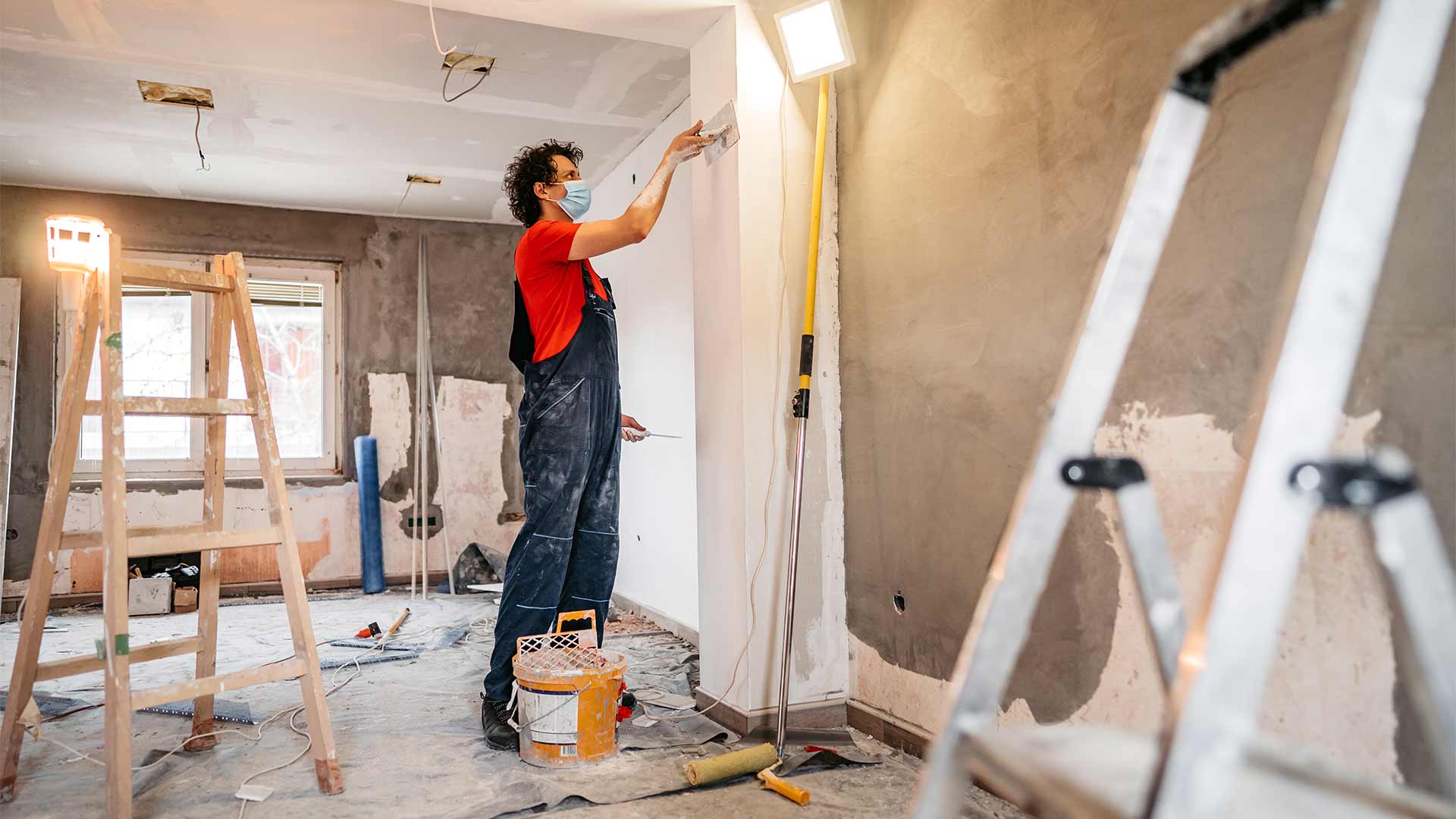

Finance
How To Buy A Fixer-Upper With Bad Credit
Published: January 8, 2024
Learn how to finance the purchase of a fixer-upper property even with bad credit. Discover expert tips and strategies to secure funding for your dream home renovation.
(Many of the links in this article redirect to a specific reviewed product. Your purchase of these products through affiliate links helps to generate commission for LiveWell, at no extra cost. Learn more)
Table of Contents
- Introduction
- Understanding Fixer-Uppers
- Assessing Your Credit Situation
- Improving Your Credit Score
- Exploring Financing Options
- FHA 203(k) Loan
- Home Equity Line of Credit (HELOC)
- Seller Financing
- Hard Money Loan
- Working with a Co-Signer
- Finding the Right Fixer-Upper Property
- Evaluating the Cost of Repairs
- Negotiating the Purchase
- Hiring Qualified Contractors
- Budgeting for Renovations
- Managing Cash Flow Effectively
- Completing the Renovation Process
- Post-Renovation Appraisal and Value Assessment
- Refinancing to Improve Your Credit
- Conclusion
Introduction
Buying a fixer-upper can be an affordable way to enter the real estate market or upgrade your current home. These properties, often in need of renovation or repair, can offer tremendous potential for homeowners with vision and the willingness to put in the work. However, if you have bad credit, you may be concerned about your eligibility for a mortgage or financing options.
In this article, we will explore how you can still purchase a fixer-upper even if you have bad credit. We will discuss strategies to improve your credit score, financing options available to individuals with less-than-ideal credit, and tips for finding and renovating a fixer-upper property. By following these steps, you can turn your dream of owning a charming, yet affordable, fixer-upper into a reality.
Before diving into the details, it’s important to understand what exactly a fixer-upper is. Essentially, it is a property that requires significant repairs or renovations in order to make it livable or increase its value. These properties are often priced lower than comparable homes in better condition, making them attractive to buyers on a budget or those looking to make a profit through renovations.
Now that you have a general understanding of fixer-uppers, let’s discuss how to assess and improve your credit score. Your credit score plays a crucial role in your ability to secure housing and financing, so it’s essential to have a clear picture of where you stand.
Understanding Fixer-Uppers
Before embarking on your journey to buy a fixer-upper, it’s important to have a good understanding of what these properties entail. Fixer-uppers are homes that are in need of significant repairs, renovations, or remodeling. They may have outdated features, structural issues, or cosmetic flaws that require attention.
While purchasing a fixer-upper may initially seem daunting, it offers several advantages. Firstly, fixer-uppers are often more affordable than move-in ready homes. This allows you to potentially buy a property in a desirable location that might otherwise be out of your price range. Additionally, by investing in a fixer-upper, you have the opportunity to customize and personalize your home according to your preferences and needs.
However, it’s crucial to approach fixer-uppers with caution. Assessing the condition of the property thoroughly is paramount. Conduct a comprehensive inspection with a qualified professional to identify any underlying issues before making a purchase. This will help you gauge the extent of the repairs needed and estimate the associated costs.
Furthermore, consider how much time, energy, and money you are willing to invest in the renovation process. Fixer-uppers can be time-consuming and require a significant financial commitment, so it’s essential to have a realistic understanding of what you are getting into.
Understanding the potential value of the property after renovations is crucial as well. Calculate the potential return on investment (ROI) by comparing the purchase price, repair costs, and the estimated market value of the renovated home. This analysis will help you determine if the fixer-upper is a sound financial investment.
Lastly, bear in mind that not all repairs or renovations are equal. Focus on addressing critical issues that affect the structural integrity, safety, and functionality of the property first. Cosmetic improvements can be tackled later, allowing you to prioritize your time and budget efficiently.
Now that you have a better understanding of what fixer-uppers are and the considerations involved, it’s time to assess your credit situation and explore strategies to improve your credit score.
Assessing Your Credit Situation
Before embarking on the journey to purchase a fixer-upper with bad credit, it’s crucial to assess your credit situation. Understanding your credit score and history will help you determine the best strategies to improve your chances of securing financing.
Start by obtaining a copy of your credit report from one of the major credit bureaus – Equifax, Experian, or TransUnion. Review the report carefully, checking for any errors or inaccuracies that could be negatively impacting your score. If you find any discrepancies, file a dispute with the credit bureau to have them corrected.
Next, take a close look at your credit score. The most commonly used credit scoring model is the FICO score, which ranges from 300 to 850. If your score falls below 580, it is considered bad credit. However, even with bad credit, there are still options available to finance your fixer-upper.
Consider the factors that contribute to your credit score, such as payment history, credit utilization, length of credit history, types of credit, and recent credit inquiries. Identify areas where you can make improvements, such as paying bills on time, reducing credit card balances, and refraining from opening new credit accounts.
If you have outstanding debts, prioritize paying them off to lower your overall debt-to-income ratio. This will boost your creditworthiness and increase your chances of securing financing.
It’s important to note that lenders may have different requirements and thresholds for credit scores, so it’s worth exploring multiple options. Some lenders specialize in working with individuals with bad credit, while others may require a higher credit score.
After assessing your credit situation, it’s time to explore strategies to improve your credit score. In the next section, we will discuss concrete steps you can take to enhance your creditworthiness and increase your chances of obtaining financing for your fixer-upper.
Improving Your Credit Score
If you have bad credit, it’s important to take proactive steps to improve your credit score before applying for financing for your fixer-upper. Here are some strategies to help you boost your creditworthiness:
- Pay your bills on time: Consistently making timely payments is one of the most significant factors influencing your credit score. Set up automatic payments or reminders to ensure you never miss a payment.
- Reduce your credit card balances: High credit card balances can negatively impact your credit utilization ratio, which is the percentage of available credit that you are using. Aim to keep your credit utilization below 30% of your available credit limit.
- Avoid opening new credit accounts: Every time you apply for new credit, it results in a hard inquiry on your credit report, which can temporarily lower your score. Limit new credit applications to prevent unnecessary inquiries.
- Pay off outstanding debts: Prioritize paying off any outstanding debts, such as credit card balances or loans. The faster you can reduce your overall debt, the better it will reflect on your credit report.
- Build a positive payment history: Consistently making on-time payments over an extended period demonstrates responsible financial behavior and can have a positive impact on your credit score.
- Keep old accounts open: Length of credit history is an important factor in calculating your credit score. If you have old credit accounts with positive payment history, keep them open to show a longer track record of responsible credit usage.
- Monitor your credit report: Regularly review your credit report for any errors or inaccuracies. If you find any discrepancies, file a dispute with the credit bureau to have them corrected.
- Work with a credit counselor: If you’re struggling to improve your credit on your own, consider seeking assistance from a reputable credit counseling agency. They can help you create a customized plan to manage your debt and improve your credit score.
Remember, improving your credit score takes time and effort. Be patient and consistent in your efforts, and over time, you will see positive changes in your creditworthiness. Once you have made progress in improving your credit, you can explore financing options specifically designed for individuals with less-than-perfect credit.
Exploring Financing Options
Having bad credit doesn’t mean you’re out of options when it comes to financing your fixer-upper. There are several alternative financing options available for individuals with less-than-perfect credit. Here are a few options to consider:
- FHA 203(k) Loan: The Federal Housing Administration (FHA) offers 203(k) loans specifically for homebuyers looking to purchase a property in need of repairs or renovations. These loans bundle the cost of the home purchase and the renovation expenses into a single mortgage. Although FHA 203(k) loans have more lenient credit requirements, it’s still important to demonstrate your ability to repay the loan.
- Home Equity Line of Credit (HELOC): If you already own a home with equity, you may be able to leverage that equity to secure a HELOC. A HELOC allows you to borrow against the value of your home, giving you access to funds for your fixer-upper project. However, keep in mind that defaulting on a HELOC could result in the loss of your home, so careful consideration is essential.
- Seller Financing: Some sellers may be open to financing the purchase themselves, acting as the lender for the transaction. This can be beneficial if you have a strong relationship with the seller or if they are motivated to sell the property. With seller financing, the terms of the loan are negotiated directly with the seller, allowing for more flexibility compared to traditional lenders.
- Hard Money Loan: Hard money loans are short-term, asset-based loans typically used by real estate investors. These loans are backed by the value of the property rather than the borrower’s creditworthiness. While hard money loans often have higher interest rates and fees, they can be a viable option for purchasing a fixer-upper with bad credit.
- Working with a Co-Signer: If your credit score is preventing you from securing financing, you may consider bringing on a co-signer with a stronger credit profile. A co-signer is someone who agrees to assume responsibility for the loan if the borrower defaults. Their strong credit can help strengthen your application and improve your chances of approval.
It’s important to carefully evaluate each financing option and consider the associated terms, interest rates, fees, and repayment plans. Working with a knowledgeable mortgage professional can help you navigate the available options and choose the best financing solution for your specific situation.
Remember, while having bad credit may limit your options, there are still viable financing options available to help you purchase and renovate a fixer-upper. Each option comes with its own advantages and considerations, so choose the one that aligns with your financial goals and circumstances.
FHA 203(k) Loan
If you’re interested in buying a fixer-upper with bad credit, one financing option to consider is the FHA 203(k) loan. This loan program, offered by the Federal Housing Administration (FHA), is specifically designed for homebuyers looking to purchase a property in need of repairs or renovations.
The FHA 203(k) loan allows you to bundle the cost of the home purchase and the renovation expenses into a single mortgage. This means you can secure the financing needed to not only purchase the property but also cover the costs of making the necessary repairs or improvements.
One of the main benefits of the FHA 203(k) loan is that it has more lenient credit requirements compared to traditional conventional loans. While a low credit score may not disqualify you from obtaining this loan, it’s still important to demonstrate your ability to repay the loan. Lenders will typically consider factors such as your income, employment history, and debt-to-income ratio when determining your eligibility.
There are two types of FHA 203(k) loans available: the limited 203(k) loan and the standard 203(k) loan. The limited 203(k) loan is suitable for smaller renovation projects that don’t require structural changes, while the standard 203(k) loan can be used for more extensive renovations that involve structural repairs and improvements.
Here are some key features and considerations of the FHA 203(k) loan:
- Loan Amount: The loan amount is determined by the projected value of the property after the renovations are completed, plus the cost of the repairs.
- Down Payment: The down payment requirement for the FHA 203(k) loan can be as low as 3.5% of the total loan amount.
- Interest Rates: FHA 203(k) loans generally have competitive interest rates, making them an attractive option for borrowers.
- Required Inspections and Estimates: As part of the loan process, an FHA-approved appraiser will assess the property’s current value and estimate the after-repair value. Additionally, a general contractor or consultant is required to provide detailed plans and estimates for the renovation work.
- Loan Disbursement: The loan disburses funds in a series of draws, allowing you to pay contractors and suppliers at various stages of the renovation process.
- Owner-Occupied Requirement: The FHA 203(k) loan is available for owner-occupied properties only. This means you must plan to live in the home as your primary residence.
It’s important to note that the FHA 203(k) loan does come with some additional requirements and guidelines, such as using licensed contractors for certain renovation work and completing the renovations within a specified timeframe.
If you’re considering an FHA 203(k) loan, it’s advisable to work with a qualified mortgage lender who has experience with this loan program. They can guide you through the process, help determine your eligibility, and assist you in submitting the necessary documentation.
The FHA 203(k) loan can be an excellent financing option for buying a fixer-upper with bad credit. It provides the opportunity to purchase and renovate a property with a single loan, opening up possibilities for homeownership and the chance to create the home you’ve always dreamed of.
Home Equity Line of Credit (HELOC)
If you are a homeowner with bad credit and looking to finance a fixer-upper, a Home Equity Line of Credit (HELOC) could be a viable option for you. A HELOC allows you to tap into the equity you have built up in your home to fund renovations or repairs.
Here’s how a HELOC works: A HELOC is a revolving line of credit that is secured by your home. You can borrow against the equity in your property up to a certain limit, typically a percentage of the appraised value minus any outstanding mortgage balance. Unlike a traditional loan, a HELOC gives you flexibility in accessing funds as needed, similar to a credit card.
One advantage of a HELOC is that it utilizes your home’s equity as collateral, which means the lender may be more willing to overlook bad credit history. However, it’s important to note that bad credit can still affect your eligibility and the interest rate you receive on the HELOC.
Here are some key features and considerations of a HELOC:
- Flexible Withdrawals: A HELOC allows you to withdraw funds as needed during the “draw period,” typically 5-10 years. You can use the funds to finance renovations, repairs, or other expenses related to your fixer-upper.
- Variable Interest Rates: HELOCs typically have variable interest rates, which means your monthly payments can fluctuate based on market conditions. It’s important to carefully consider the potential impact of interest rate changes on your finances.
- Repayment Terms: After the draw period ends, the HELOC enters the “repayment period,” during which you can no longer withdraw funds and must start making principal and interest payments. The repayment period typically lasts 10-20 years.
- Interest-Only Payments: During the draw period, you may have the option to make interest-only payments. This can provide flexibility in managing your cash flow but keep in mind that you won’t be reducing the principal balance during this time.
- Risk to Home Ownership: It’s important to make timely payments on your HELOC to avoid default and potential foreclosure, as the lender can seize your home if you default on the loan.
- Loan-to-Value Ratio (LTV): Lenders typically have a maximum LTV ratio for a HELOC, which determines the amount you can borrow based on the appraised value of your home. The maximum LTV ratio varies by lender and can be affected by your creditworthiness.
Prior to applying for a HELOC, it’s essential to assess your financial situation and consider the potential risks and responsibilities. Evaluate your ability to make the required payments on time and consider the impact on your overall debt-to-income ratio.
Furthermore, compare terms and interest rates from various lenders to secure the most favorable terms that fit your needs. It may be beneficial to work with a mortgage broker who can help you navigate the HELOC application process and find the best lender for your circumstances.
In summary, a HELOC can provide a flexible financing option for your fixer-upper project, even with bad credit. By leveraging the equity in your home, you may be able to access the funds necessary to transform your property into the home of your dreams.
Seller Financing
If you have bad credit but still want to purchase a fixer-upper, seller financing can be an attractive option. In this arrangement, the seller acts as the lender, providing the financing for the purchase of the property. This can be a win-win situation for both parties involved.
Here’s how seller financing works: Instead of obtaining a traditional mortgage from a bank or lender, you negotiate the terms directly with the seller. The seller holds a note, representing the loan, and you make monthly payments to them over an agreed-upon period of time.
Seller financing offers several benefits, especially for buyers with bad credit:
- Flexible Terms: Seller financing allows for more flexible terms compared to traditional mortgages. You can negotiate the down payment, interest rate, repayment period, and other aspects of the loan directly with the seller.
- No Bank Approval: Since you are working directly with the seller, there is no need to go through the lengthy process of obtaining bank approval. This can save time and make the transaction smoother.
- Lower Closing Costs: Seller financing can help reduce closing costs, as you may not have to pay certain fees typically associated with traditional mortgages.
- Opportunity for Negotiation: Seller financing provides an opportunity to negotiate the terms of the loan based on your financial situation. Since the seller has a vested interest in selling the property, they may be more flexible in accommodating your needs.
- Less Stringent Credit Requirements: Sellers who offer financing are often more lenient with credit requirements compared to traditional lenders. This opens up opportunities for individuals with bad credit to purchase a fixer-upper.
However, it’s important to note that not all sellers are willing to offer financing, and those who do may require a higher down payment or charge a higher interest rate due to the additional risk involved. It’s crucial to thoroughly evaluate the terms and consider the long-term financial implications before entering into a seller financing agreement.
Working with a real estate professional or an attorney who specializes in seller financing can help guide you through the process, ensure that all legal requirements are met, and protect your interests.
In summary, seller financing can be a viable option for purchasing a fixer-upper with bad credit. It allows for greater flexibility, less stringent credit requirements, and the opportunity to negotiate terms directly with the seller. However, it’s important to conduct due diligence, consider the potential risks and benefits, and seek professional advice to ensure a smooth and successful transaction.
Hard Money Loan
If you have bad credit and are looking to finance a fixer-upper, a hard money loan may be a viable option to consider. A hard money loan is a type of short-term loan that is typically used by real estate investors or individuals looking to purchase properties in need of renovation.
Here’s how a hard money loan works: Rather than being based on your creditworthiness, a hard money loan is secured by the value of the property itself. The lender evaluates the property’s potential as an investment and provides a loan based on its appraised value. While your credit history may be considered, it is generally a secondary factor in the loan approval process.
Hard money loans are typically provided by private investors or specialized lending companies. Here are some key features and considerations of hard money loans:
- Higher Interest Rates and Fees: Hard money loans often come with higher interest rates and fees compared to traditional loans. This is due to the increased risk for the lender, as they are primarily evaluating the potential value of the property rather than the borrower’s creditworthiness.
- Short-Term Financing: Hard money loans are generally short-term loans, with repayment periods ranging from a few months to a few years. The shorter duration allows investors to quickly complete renovations and either sell the property or refinance with a traditional mortgage.
- Quick Approval and Funding: Hard money loans are known for their faster approval process compared to traditional financing options. This can be advantageous when time is of the essence for purchasing a fixer-upper property.
- Loan-to-Value Ratio (LTV): Lenders typically provide hard money loans at a percentage of the property’s appraised value, known as the loan-to-value ratio. LTV ratios can vary, but they are often in the range of 60-70% to protect the lender in case of default.
- Property as Collateral: The property being purchased or renovated serves as collateral for the loan. This means that if you default on the loan, the lender can seize the property to recoup their investment.
- Asset-Based Evaluation: In assessing a hard money loan, the lender focuses on the value and potential of the property itself, including its location, condition, and potential for appreciation. Your credit history and income may have less influence on the lender’s decision.
Hard money loans can be beneficial for individuals with bad credit who are confident in their ability to renovate and increase the value of a property. However, it’s important to carefully evaluate the financial feasibility and potential risks associated with this type of loan.
Working with a real estate professional who has experience with hard money loans can help you navigate the process and connect you with reputable lenders. They can also provide guidance on finding properties with the potential for a profitable return on investment.
In summary, hard money loans can provide financing for individuals with bad credit who are interested in purchasing a fixer-upper. They offer a faster approval process and prioritize the value of the property over creditworthiness. However, higher interest rates and fees should be carefully considered before deciding on this financing option.
Working with a Co-Signer
If you have bad credit but still want to purchase a fixer-upper, working with a co-signer can greatly enhance your chances of securing financing. A co-signer is someone who agrees to take on the responsibility of the loan if you are unable to make the payments. Having a co-signer with a stronger credit profile can help mitigate the risk associated with your bad credit history.
Here are some key considerations when working with a co-signer:
- Choose a Trustworthy Co-Signer: Select a co-signer who has a good credit history, stable income, and a strong financial position. The co-signer should be someone you trust and who is willing to take on the financial obligations of the loan if necessary.
- Improve Borrowing Capacity: With a co-signer, lenders may be more willing to provide financing for your fixer-upper. The co-signer’s creditworthiness strengthens your application, potentially increasing your borrowing capacity and securing more favorable terms.
- Shared Responsibility: Working with a co-signer means that both parties are equally responsible for making loan payments. Discuss and agree upon each person’s financial obligations, including the division of loan repayment responsibilities.
- Impact on the Co-Signer’s Credit: It’s important to note that having a co-signer can affect their credit as well. Late payments or defaulting on the loan will impact both your credit and the co-signer’s credit. Open communication and trust are crucial to maintaining a positive co-signer relationship.
- Plan for Building Credit: Use the opportunity of the co-signed loan to improve your credit. Make timely payments and demonstrate responsible financial behavior to rebuild your credit history. As you establish a positive payment history, you can eventually refinance the loan in your name only.
- Legal and Financial Advice: Before entering into a co-signing arrangement, it is wise to consult with a lawyer and a financial advisor. They can help you understand the legal obligations and potential risks associated with co-signing, ensuring that all parties are protected.
When considering a co-signer, keep in mind that not everyone may be willing or eligible to take on this responsibility. It’s important to have open and honest discussions with potential co-signers about their comfort level and financial situation.
Working with a co-signer can provide you with the opportunity to secure financing for your fixer-upper, even with bad credit. However, it’s crucial to prioritize open communication, trust, and responsible financial behavior to protect the relationship and minimize the risk for both parties involved.
Finding the Right Fixer-Upper Property
When embarking on the journey to purchase a fixer-upper with bad credit, finding the right property is paramount. Here are some tips to help you find the perfect fixer-upper:
- Determine Your Needs and Priorities: Before starting your search, identify your specific needs, preferences, and budget. Consider factors such as location, size, layout, and potential for renovation.
- Work with a Real Estate Agent: Enlist the help of a real estate agent who specializes in fixer-upper properties. They can guide you through the process, help you find suitable listings, and provide valuable insights into the local market.
- Search Online Listings: Utilize online real estate platforms and websites to search for fixer-upper properties in your desired area. Customize the search filters to include properties that need renovation or are priced below market value.
- Consider Auctions and Foreclosures: Auctions and foreclosed properties often offer opportunities to purchase fixer-uppers at discounted prices. However, be aware of the potential risks and conduct thorough due diligence before participating in these types of sales.
- Network and Explore Off-Market Opportunities: Inform friends, family, and acquaintances that you are looking for a fixer-upper property. Sometimes, great opportunities can arise from word-of-mouth referrals or off-market listings.
- Drive or Walk Around Neighborhoods: Explore desired neighborhoods and look for signs of properties in need of repair or renovation. Sometimes, the best opportunities can be found by directly observing the area you are interested in.
- Attend Real Estate Events: Local real estate seminars, workshops, and networking events can provide valuable information and connections within the industry. Attend these events to expand your knowledge and potentially come across off-market fixer-upper opportunities.
- Work with Contractors and Home Inspectors: Connect with contractors and home inspectors who are familiar with the local market and can provide insights into potential properties. They can help estimate repair costs and assess the feasibility of a property’s renovation potential.
- Be Patient and Diligent: Finding the right fixer-upper takes time and effort. Be patient in your search and thoroughly evaluate each property to ensure it aligns with your goals and financial situation.
Remember, finding the right fixer-upper property requires due diligence, research, and professional guidance. Be proactive in your search and consider all available resources to maximize your chances of finding a property with great potential.
Once you’ve found a potential fixer-upper property, it’s important to evaluate the cost of repairs to make an informed decision on whether to proceed. In the next section, we will discuss the process of assessing the cost of repairs and creating a renovation budget.
Evaluating the Cost of Repairs
When considering a fixer-upper property, it’s crucial to assess the cost of repairs accurately. Understanding the potential renovation expenses will help you determine the feasibility of the project and ensure you budget accordingly. Here are some steps to evaluate the cost of repairs:
- Conduct a Comprehensive Property Inspection: Hire a qualified home inspector or contractors to conduct a thorough inspection of the property. They will assess the overall condition of the house, identify any structural issues, examine electrical and plumbing systems, and uncover potential hidden problems.
- Create a Detailed Scope of Work: Based on the inspection, create a detailed scope of work that outlines all necessary repairs and renovations. This includes both cosmetic improvements and essential repairs such as roofing, flooring, plumbing, and electrical updates.
- Obtain Multiple Contractor Estimates: Reach out to licensed contractors and obtain multiple estimates for the renovation work outlined in the scope. Having multiple quotes will help you compare costs and choose contractors who offer competitive prices and high-quality work.
- Factor in Material Costs: Consider the cost of materials needed for the renovations. Research prices for flooring, fixtures, appliances, paint, and any other materials required to complete the project.
- Consider Permit and Inspection Costs: Keep in mind that certain projects may require permits and inspections, which come with associated costs. Familiarize yourself with local building regulations and budget for these additional expenses.
- Contingency Budget: It’s wise to set aside a contingency budget of at least 10-15% of the total renovation cost. This serves as a buffer to cover unexpected expenses or changes that may arise during the renovation process.
- Consult with Professionals: Seek advice from contractors, architects, or designers who have experience with fixer-upper properties. They can offer guidance on potential costs and help you prioritize necessary renovations versus cosmetic updates.
Remember, the accuracy of your cost estimates is crucial for budgeting and evaluating the financial feasibility of the fixer-upper property. It’s important to be thorough and detailed in your evaluation to avoid any surprises later on.
Once you have estimated the cost of repairs, you can proceed with negotiating the purchase of the fixer-upper property, keeping in mind both the purchase price and the estimated renovation expenses. In the next section, we will discuss strategies for negotiating the purchase and securing the best deal.
Negotiating the Purchase
When purchasing a fixer-upper property, effective negotiation skills can save you money and ensure you secure the best deal. Here are some strategies to consider during the negotiation process:
- Research Comparable Sales: Before making an offer, research recent sales of similar properties in the area. This will provide you with a baseline to assess the property’s value and guide your negotiation strategy.
- Consider the Property’s Condition: Take into account the condition of the property when determining your offer. If significant repairs are needed, this can provide leverage for negotiating a lower price.
- Highlight the Seller’s Benefit: Emphasize to the seller how a cash offer or a quick closing can benefit them. Sellers may be more inclined to negotiate if they see advantages, such as a smooth transaction or avoiding extended holding costs.
- Point Out Flaws and Repairs: Clearly communicate to the seller the repairs and improvements required. Share estimates and inspection reports to support your claims. This can help justify a lower offer or negotiate for seller concessions, such as covering some of the repair costs.
- Be Prepared to Walk Away: Don’t be afraid to walk away if the seller is not willing to negotiate or meet your terms. It’s important to be willing to explore other options and not settle for a deal that doesn’t align with your budget and goals.
- Request Seller Disclosures: Ask the seller for any relevant disclosures about the property’s condition or known issues. This information can help you assess the potential costs of repairs and negotiate accordingly.
- Include Contingencies: Protect yourself by including contingencies in the purchase agreement, such as an inspection contingency or financing contingency. These give you the option to back out of the deal if specific conditions aren’t met or if major issues are discovered during the inspection.
- Utilize a Real Estate Agent: Working with a knowledgeable real estate agent can greatly assist in the negotiation process. They can provide market insights, guide you through the offer presentation, and negotiate on your behalf.
- Stay Flexible: While negotiation is important, it’s essential to maintain flexibility and focus on finding a mutually beneficial agreement. Understand the seller’s motivations and be open to finding creative solutions that address both parties’ needs.
Remember, effective negotiation requires preparation, research, and clear communication. By understanding the market, the property’s condition, and your own financial limits, you can navigate the negotiation process with confidence and secure a favorable deal on your fixer-upper property.
Once you have successfully negotiated the purchase, the next step is to begin the renovation process. In the following sections, we will explore important considerations in hiring qualified contractors, budgeting for renovations, and managing cash flow effectively.
Hiring Qualified Contractors
Hiring qualified and experienced contractors is crucial when renovating a fixer-upper property. The right professionals can ensure that the necessary repairs and renovations are done properly and efficiently. Here are some important steps to consider when hiring contractors:
- Research and Obtain Multiple Quotes: Take the time to research and obtain multiple quotes from different contractors. This allows you to compare prices, evaluate their expertise, and find the best fit for your project.
- Check Credentials and Licenses: Verify that the contractors you are considering have the necessary licenses and certifications required by local authorities. This ensures they meet the professional standards of their trade.
- Review Portfolios and References: Ask for portfolios of their past projects and request references from previous clients. This gives you insight into the quality of their work and their ability to complete projects on time and within budget.
- Confirm Insurance Coverage: Always ensure that contractors have liability insurance and workers’ compensation coverage. This protects both you and the workers in case of accidents or damages during the renovation process.
- Communicate Your Expectations: Clearly communicate your expectations and vision for the project to potential contractors. Ensure they understand the desired outcome and your budget constraints.
- Ask About Subcontractors: Inquire about whether the contractor will be using subcontractors for certain aspects of the project. If so, ensure that these subcontractors are also licensed and qualified for their respective trades.
- Obtain Detailed Contracts: Get all agreements and scope of work in writing. The contract should include a detailed description of the work to be performed, project timelines, payment terms, and any warranties or guarantees offered.
- Consider Communication and Compatibility: Assess the contractor’s communication skills, responsiveness, and willingness to answer your questions. Ensure that you have good rapport and feel comfortable working with them throughout the renovation process.
- Monitor Progress and Quality: Regularly visit the construction site to monitor the progress and quality of the work being done. Address any concerns or issues promptly to ensure that the renovation stays on track.
- Payment Schedule: Agree on a payment schedule that aligns with the project milestones. Avoid making complete upfront payments and retain a certain percentage until the work is completed to your satisfaction.
Remember, hiring qualified contractors is an essential part of the renovation process. Take the time to do your due diligence, ask for recommendations from trusted sources, and rely on professional expertise to make informed decisions. By working with skilled contractors, you can ensure that your fixer-upper property is transformed into the home of your dreams.
In the next section, we will discuss the importance of budgeting for renovations and managing cash flow effectively to ensure a successful renovation project.
Budgeting for Renovations
Effective budgeting is essential when renovating a fixer-upper property. Creating a realistic budget helps ensure that you have the necessary funds to complete the renovations and avoid any financial surprises along the way. Here are some key considerations when budgeting for your renovations:
- Evaluate the Scope of Work: Take into account the extent of the renovations needed. Consider both cosmetic improvements and essential repairs, and prioritize them based on urgency and cost.
- Gather Multiple Quotes: Obtain detailed quotes from contractors for each aspect of the renovation. Compare prices, materials, and labor costs to make an informed decision.
- Include Contingency: Set aside a contingency fund of at least 10-15% of the total renovation cost. This serves as a buffer to cover unexpected expenses or changes that may arise during the renovation process.
- Research Material Costs: Research and get quotes for the materials needed for the renovations. Consider the quality, durability, and cost-effectiveness of the materials to stay within budget.
- Factor in Permits and Fees: Budget for any required permits and associated fees. Check with the local authorities to ensure compliance with building codes and regulations.
- Consider Labor Costs: Account for labor costs, including contractor fees, subcontractor expenses, and any specialized professionals required for specific tasks.
- Plan for Appliances and Fixtures: If your renovation involves replacing appliances or fixtures, research and budget for these items separately. Consider energy efficiency and quality when making your selections.
- Allocate for Unexpected Expenses: Despite thorough planning, unexpected expenses can arise during renovations. Be prepared by setting aside additional funds to cover unexpected repairs or necessary changes to the original plan.
- Track Expenses and Keep Records: Maintain a detailed record of all expenses, including receipts and invoices. This will help you stay organized, monitor the progress of your budget, and make adjustments if necessary.
- Prioritize and Phase the Renovations: If your budget is limited, prioritize the most essential renovations and consider phasing the project over time. This allows you to tackle the most critical areas first and spread out the costs over a longer period.
Remember, creating a realistic renovation budget requires careful planning, research, and consideration of all factors involved. It’s crucial to be thorough and diligent when estimating costs to avoid financial strain and ensure the successful completion of your fixer-upper project.
In the next section, we will discuss the importance of managing cash flow effectively during the renovation process.
Managing Cash Flow Effectively
Managing cash flow effectively is crucial when renovating a fixer-upper property. Proper cash flow management ensures that you have the necessary funds to cover expenses throughout the renovation process and reduces the risk of running into financial difficulties. Here are some key strategies for managing cash flow effectively:
- Create a Detailed Budget: Develop a comprehensive budget that outlines all anticipated expenses and allocates funds accordingly. This allows you to track and manage your cash flow more effectively.
- Secure Sufficient Financing: Ensure that you have secured adequate financing to cover the renovation costs. This may involve exploring various financing options, such as loans, lines of credit, or personal savings.
- Estimate Expenses Realistically: When developing your budget, be realistic with your cost estimates and factor in potential contingencies. It’s better to slightly overestimate expenses to ensure you have enough funds available.
- Monitor Expenses Closely: Keep a close eye on all expenses throughout the renovation process. Review invoices, receipts, and contractor quotes carefully to ensure accuracy and identify any discrepancies or potential cost savings.
- Pay Contractors/Purchases Promptly: Honor your payment obligations promptly to maintain good relationships with contractors and suppliers. Late payments may result in project delays or strained relationships, negatively impacting your cash flow.
- Negotiate Supplier/Payment Terms: Negotiate favorable payment terms with suppliers to optimize your cash flow. This may include longer payment terms or seeking discounts for early payments.
- Manage Renovation Phases: If applicable, consider phasing your renovation project to manage cash flow more effectively. This allows you to spread out expenses over time and allocate resources strategically.
- Track and Review Cash Flow Regularly: Continuously monitor your cash flow against your budget and make adjustments as necessary. Regularly reviewing your financial position will help you identify potential issues before they escalate.
- Control Discretionary Spending: Be mindful of discretionary spending during the renovation process. Avoid unnecessary expenses that may strain your cash flow and divert funds from necessary renovations.
- Prepare for Unexpected Expenses: Build a financial buffer for unexpected expenses that may arise during the renovation. By having a contingency fund, you can handle unforeseen issues without jeopardizing your cash flow.
Remember, effective cash flow management is essential for the successful completion of your fixer-upper renovation. By closely monitoring expenses, staying on top of payments, and anticipating potential challenges, you can ensure that your project progresses smoothly and stays within your financial means.
In the next sections, we will discuss the process of completing the renovation, assessing the post-renovation value of your property, and strategies for refinancing to improve your credit.
Completing the Renovation Process
After careful planning and diligent execution, reaching the final stages of the renovation process for your fixer-upper property is an exciting milestone. Here are some important considerations to ensure a successful completion of your renovation:
- Review Your Renovation Plan: Before wrapping up, review your initial renovation plan and compare it to the completed work. Ensure that all the intended repairs and improvements have been addressed to your satisfaction.
- Address Any Last-Minute Touch-Ups: Take the time to identify any areas that require attention or finishing touches. This may include paint touch-ups, installing fixtures, or addressing minor cosmetic imperfections.
- Double-Check Plumbing and Electrical Systems: Verify that all plumbing and electrical systems are in working order. Test outlets, switches, and appliances to ensure that everything is functioning correctly and safely.
- Finalize Permits and Inspections: If necessary, ensure that all required permits have been obtained and final inspections have been scheduled and completed. This ensures compliance with local building codes and regulations.
- Clean Up and Dispose of Debris: Remove any construction debris and clean the property thoroughly. This will help prepare the space for final inspections and make it more presentable for potential appraisal or property valuation.
- Obtain a Certificate of Occupancy: If applicable, apply for and obtain the necessary certificate of occupancy. This certifies that the property meets all building and safety requirements and is suitable for occupancy.
- Document and Keep Records: Maintain detailed records, including before-and-after photos, invoices, receipts, and warranties for any appliances or materials installed during the renovation. This documentation will be useful for insurance purposes and potential future resale.
- Conduct a Final Walk-Through: Before closing the renovation process, perform a final walk-through of the property. Carefully inspect the completed work to ensure that it aligns with your expectations and that all agreed-upon renovations have been completed.
- Plan for Post-Renovation Maintenance: Develop a maintenance plan to keep the property in good condition after the renovation. Regular upkeep and preventative maintenance can help protect your investment and extend the longevity of the improvements.
Completing the renovation process marks a significant achievement in your fixer-upper journey. Take the time to celebrate your hard work and enjoy the transformation you have accomplished. Now, it’s time to assess the post-renovation value of your property, which we will discuss in the next section.
Post-Renovation Appraisal and Value Assessment
Once you have completed the renovation of your fixer-upper property, it’s crucial to assess its post-renovation value to understand the return on your investment. Performing a post-renovation appraisal and value assessment helps determine the property’s current market value and potential appreciation. Here’s what you need to consider:
- Hire a Professional Appraiser: Engage a licensed appraiser with experience in evaluating renovated properties. They will assess factors such as the property’s size, location, features, and condition to determine its market value.
- Provide Renovation Documentation: Present the appraiser with detailed documentation of the renovations, including before-and-after photos, invoices, and a list of improvements made. These documents can help justify the increase in the property’s value.
- Analyze Comparable Sales: Research recent sales of properties similar to yours in the local market. Compare their sale prices to assess the value of your renovated property. This analysis can provide valuable insights into the potential appreciation and market demand for similar properties.
- Consider Energy Efficiency Improvements: Energy-efficient upgrades and sustainable features can enhance the value of your property. Highlight these improvements and their potential long-term cost savings to the appraiser.
- Evaluate Neighborhood Trends: Take into account any neighborhood improvements or upcoming developments that may influence the property’s value. Consider factors such as school districts, amenities, transportation, and neighborhood desirability.
- Account for Local Market Conditions: Assess the overall real estate market in your area, including supply and demand dynamics, average sales prices, and the competitiveness of the market. This information helps provide context for the property’s post-renovation value.
- Look for Added Value: Identify any unique features or upgrades that can set your property apart from others in the area. Features such as a new layout, high-end finishes, or additional living spaces can significantly impact the property’s value.
- Consult with Real Estate Professionals: Seek advice from real estate agents or brokers familiar with your local market. They can provide insights into recent sales, market trends, and the potential value of your renovated property.
- Consider Long-Term Appreciation: Appreciation potential should also be part of your value assessment. Evaluate the long-term benefits of owning a renovated property in terms of market appreciation and future growth in the surrounding area.
By assessing the post-renovation value of your property, you gain a deeper understanding of its potential and the return on your investment. This information is valuable for determining whether to sell the property, refinance, or further leverage its value in the future.
In the next section, we will discuss strategies for refinancing to improve your credit and potentially access better financing options.
Refinancing to Improve Your Credit
If you have completed the renovation of your fixer-upper property and want to improve your credit, refinancing can be a strategic step. Refinancing allows you to replace your existing mortgage with a new loan that offers better terms and interest rates. Here’s how refinancing can help improve your credit:
- Lower Interest Rates: Refinancing to a loan with a lower interest rate can result in reduced monthly payments. Making consistent, on-time payments on the new loan can help improve your credit score over time.
- Consolidate Debt: With a cash-out refinance, you can consolidate other high-interest debts, such as credit card debt or personal loans, into your mortgage. This can simplify your payments and reduce your overall debt load, positively impacting your creditworthiness.
- Extend Loan Term: Refinancing to a loan with a longer term can result in lower monthly payments, making it more manageable to keep up with your mortgage obligations. This can help you avoid late payments, which can negatively affect your credit score.
- Build Equity: As you make regular mortgage payments, you build equity in your home. Over time, this increased equity can enhance your creditworthiness and open up opportunities for better financing options in the future.
- Access Equity for Credit Improvement: A cash-out refinance can also provide you with access to the equity you’ve built in your home. You can use this extra cash to pay off high-interest debt, invest in home improvements, or fund other initiatives that can positively impact your credit.
- Establish Positive Payment History: Consistently making on-time payments on your refinanced loan is crucial for improving your credit. Demonstrating responsible payment behavior over an extended period will contribute positively to your credit history.
- Work with a Mortgage Professional: Consult with a mortgage professional who specializes in refinancing options. They can help assess your financial situation, guide you through the process, and find the best refinancing options tailored to your needs.
- Monitor and Review Your Credit: Throughout the refinancing process, continue monitoring your credit and reviewing your credit reports. This allows you to address any errors or discrepancies promptly and keep track of your progress in improving your credit score.
While refinancing can be a useful tool for improving your credit, it’s important to carefully consider the costs and benefits involved. Analyze the potential savings, the impact on your overall financial situation, and the length of time you plan to stay in the property.
Remember, refinancing is not a one-size-fits-all solution. It’s essential to assess your unique circumstances and consult with a mortgage professional to determine if it aligns with your financial goals and credit improvement strategy.
By successfully refinancing your mortgage, you can lower your interest rates, consolidate debt, and build positive payment history that improves your credit over time. This lays the foundation for better financing opportunities in the future and strengthens your overall financial well-being.
Conclusion
Buying a fixer-upper with bad credit may initially seem challenging, but with the right strategies and financial planning, it is entirely possible to turn your dream of owning a renovated property into a reality. By understanding the unique considerations involved and taking proactive steps, you can navigate the process and achieve success.
Assessing your credit situation and exploring financing options tailored to individuals with bad credit are the first crucial steps. Whether it’s through FHA 203(k) loans, seller financing, hard money loans, or working with a co-signer, there are various avenues to secure the necessary funds for your fixer-upper.
Finding the right fixer-upper property requires careful research, utilizing online listings, attending real estate events, and networking within your community. Once you’ve identified the property, evaluating the cost of repairs and negotiating the purchase price are vital to ensure you make an informed decision regarding your investment.
Hiring qualified contractors, developing an accurate renovation budget, and effectively managing cash flow help streamline the renovation process and keep your project on track. Completing the renovations, conducting post-renovation appraisals, and refinancing to improve your credit are key steps toward maximizing the value of your property.
Throughout this journey, it’s essential to remain patient, flexible, and diligent. Renovating a fixer-upper takes time, effort, and careful planning, but the end result can be incredibly rewarding both financially and personally.
Remember to consult with professionals, seek guidance from real estate agents, contractors, and mortgage experts who specialize in fixer-upper properties. They can provide valuable insights, expert advice, and help you navigate any challenges that may arise.
Buying a fixer-upper with bad credit is a remarkable opportunity to create a home tailored to your vision. With determination, careful planning, and the right expertise, you can turn a dated property into a beautiful, functional space that you can be proud to call your own.

